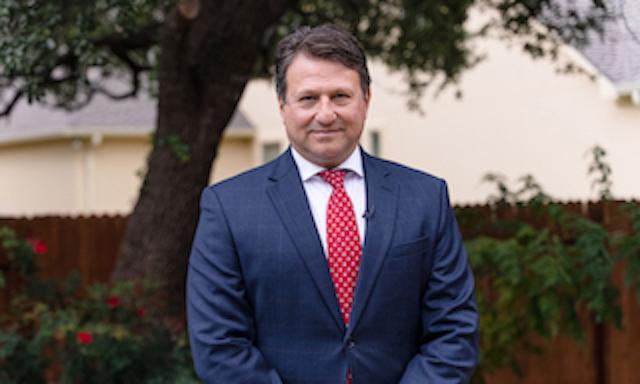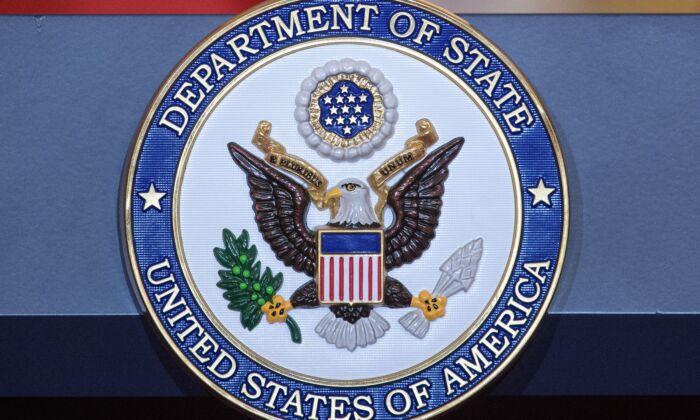Illegal mass migration from Latin America funneled through the southern border is aided by United Nations programs and organizations and funded by U.S. taxpayers, said Todd Bensman, a senior national security fellow at the Center for Immigration Studies (CIS).
He’s also the author of the new book, “Overrun: How Joe Biden Unleashed the Greatest Border Crisis in U.S. History.”
How the UN Facilitates Illegal Immigration
Illegal immigration on the southern border is facilitated by two international organizations that belong to the United Nations: the International Organization for Migration (IOM) and the office of the United Nations High Commissioner for Refugees (UNHCR).The IOM is part of the U.N. system as the leading intergovernmental organization in the field of migration. The UNHCR is the United Nations agency for refugees.
“They both have sort of overlapping missions,” Bensman said.
They work together and operate aid stations all along the immigration trails in South America and Central America to ensure that refugees and immigrants will get what they need and will not starve or sleep in the streets on their journey to North America, Bensman explained.
It’s like aid stations along a marathon route, he added.

These agencies, which also operate in Mexico, claim that they help migrants get Mexican documents to legalize their stay in Mexico, and within a day or so after receiving the documents, they head to the banks of the Rio Grande River or the Gulf of Mexico to cross the U.S. border illegally, Bensman said.
Their freshly minted Mexican cards, visas, and different documents are discarded on both the Texan and Mexican sides of the river, he said.
The view among the agencies is to put on blinders about the migrants’ eventual destination, because to knowingly help them reach the U.S. border would mean the agencies were “participating in something illegal,” Bensman continued.
Crossing a border of any country without permission breaks the law, and that includes crossing into Guatemala and from Guatemala into Mexico without permission, he said.
There are large groups of Haitians who come to Mexico with the goal of going north to America, but the Mexican authorities hold them back “until they get their papers,” Bensman said.
Assistance to Illegals

The most visible way the U.N. organizations assist the U.S.-bound migrants in Latin America is by “showering” them with cash in the form of debit-like cash cards, “cash-filled envelopes,” or vouchers to pay for hotel or transportation, Bensman said.
They get monthly stipends in the amount pegged to the local cost of living that are loaded on their cards every month or every two weeks, he continued.
“This is a sustainability program where the United Nations is making sure that people are able to stay the course,” Bensman said. “Maybe when they’re contemplating making the journey, and they’re not sure they have enough money, they know in the back of their minds that they'll kind of be okay.”
Altogether, these handouts, including cash cards and vouchers, ensure that migrants have all of the basic necessities of life on the road to the United States, Bensman summarized.
“A lot of that money goes to psychological programs,” he said.
If migrants on the trail to the U.S. border get turned down by Mexican authorities when applying for asylum in Mexico, they get stuck in Mexico and cannot travel north, Bensman said. If that happens, they can go to the U.N.-funded agencies offering “memory excavation,” a psychological method with about a 90 percent success rate that supposedly helps the migrants realize that they have traumatically forgotten the actual persecution that would get them asylum, the expert said.
The money is also used by U.N. organizations to fund legal training sessions for immigrants, conducted by American lawyers, that teach them about their human rights under the U.S. asylum law, Bensman said.
“[It] is basically a way to say, watch out what you say to the asylum officers, here’s what you shouldn’t say, and here’s what you should say,” he said.
Following the Money
A question remains where the money for handouts and assistance programs comes from.These cash-based assistance programs are U.S. taxpayer-funded, Bensman said.
The U.N. plans to spend some $450 million on cash-based assistance programs in Latin America in 2023, according to its publicly available budget plan, he added.
The U.N. organizations have partnered with more than 200 nongovernmental, civil society, and faith-based organizations to carry out immigration programs and share the funding with their partners, the plan states. Many of the nongovernmental organizations are U.S.-based, Bensman said.
However, the U.N. structure is quite complex, and so is the funding mechanism in the United States as its contributions come from several places in the government, such as Congress and different parts of the executive branch, Bensman said, so it is really hard to figure out and untangle which contributions support illegal immigration through the southern border.
“I still have not been able to untangle, and neither have certain congressional offices that are working pretty hard on this right now,” he said.
In 2022, Rep. Lance Gooden (R-Texas) demanded transparency from the United Nations and the State Department on taxpayer funds used to provide refugee travel loans via IOM.
Gooden pointed out in a statement that nonprofit organizations acting as resettlement agencies are “permitted to keep 25 percent of the loans they recoup, giving these organizations a financial interest in the number of refugees brought into the United States.”
“Taxpayer dollars should not be funneled through international organizations to incentivize mass migration to our country,” Gooden said in the statement.
What’s Behind Border Crisis

Bensman said he believes that the mass illegal immigration was unleashed by a left-wing cabal that was able to ascend to real power in the White House after Joe Biden took office in January 2021 and seize control of the immigration portfolio.
Prominent icons of the Democrat Party like Hillary Clinton, President Barack Obama, or President Bill Clinton would have never approved of such immigration policies, said Bensman.
The proponents of the borderless country have been trying to get into power for 25 years, but the Democrats have always turned them down, fearing that nobody would vote for Democrat candidates advocating for an open border, he explained.
The linchpins of the new immigration policy are: to end detention of illegal aliens, stop their deportation, and provide amnesty to the maximum number possible of illegal immigrants already in the United States, the expert said. This goes the opposite way of the current immigration and naturalization laws which require enforcing a secure border, he added.
One reason that left pushes for an open border is the ideology of the borderless global world, Bensman asserted.
Another reason is financial gain, he said, referring to benefits acquired by the group of people he called “the migrant advocacy industrial complex, which is this really large constellation of NGOs, migrant resettlement groups, and advocacy groups.”
The people who have the authority right now over the immigration portfolio come from these groups, Bensman said.
“Those organizations get hundreds of millions of dollars and even billions of dollars in federal contracts.”
They also profit from retail marketing for donations by promoting the gravity and the need for services provided by their organizations, Benson said.
“I look at this as a religion, that these people are dedicated to this as a religion,” he said.






